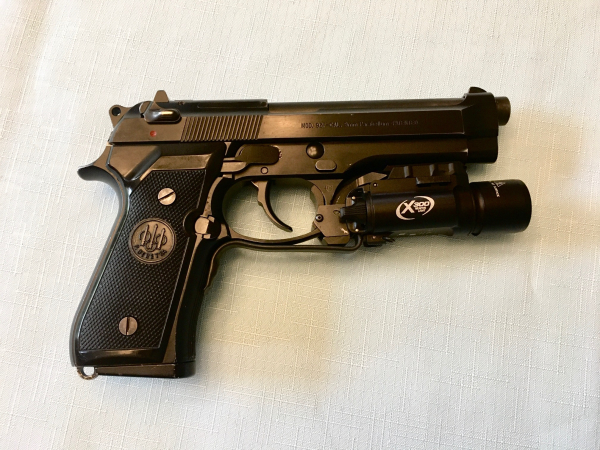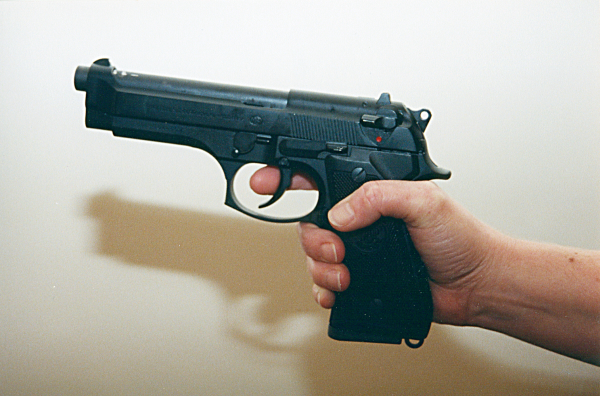Today’s feature comes to us courtesy of industry insider and career LEO Pete Fosselman.
Having been in active law enforcement since 1973, there have been many lessons learned over my tenure. After 33 years full time with the Los Angeles Sheriff's Department, it was time to retire from being a Lieutenant and I joined the ranks of the reserve deputies with the same organization where I am still active today. That means I’ve had almost 47 years of opportunities to encounter issues and learn from them.
When I first joined up, the shooting requirements with my issued Smith and Wesson Model 15 revolver were to qualify once a month. Eventually and after the transition to the Beretta 92 series (first the "F" and then the "FS") pistols, that qualification changed to once a quarter. Several years ago, the department had a dozen 53 foot trailers converted to contain three indoor shooting lanes. They were called mobile ranges. The initial idea was to periodically move the trailers from the various sub stations throughout Los Angeles County and allow all the station's personnel to qualify on location, rather than having to drive to one of the two outdoor ranges. The idea of moving the trailers faded after about five years and now the trailers are somewhat "permanent" at select locations in the County.
Eventually, just like us individuals, the department learned a lesson. That being the huge influx of shooters at each of the trailers near the end of each quarter. This caused excessive use in the final few weeks of each quarter and the maintenance of the air filtrations systems, as well as the cleaning and repairing of the backstops, were overwhelming. So, in order to spread out the use and maintenance more evenly, the department assigned specific months alphabetically by last name in which to qualify. With my last name, I must qualify in January, April, July and October.

Being July, it was my month to qualify. I drove to the station and fellow range master Jeff Smith was running the range. I keep my county issued Beretta in my locker on the top shelf, in a zipped closed gun rug. I have pretty much kept it that way, since 1987 when it was issued to me during the revolver to semi-automatic transition training. I've had the same Beretta 92F for my duty weapon all these years. Whenever I would remove it from the gun rug and insert into my duty holster, I always did a press check, just to confirm a round was in the chamber and we were ready to rock... if needed.
The other day was different when I encountered an issue, never before experienced. Keep in mind, that in addition to being a cop, I was also a gun scribe for a handful of magazines and I do know a few things on how to clean and maintain my firearms, or so I thought. I am also a certified range master with the department and, like Jeff Smith, I do run the mobile range from time to time. At the end of that day, I wrote the following and sent it to my fellow deputies in a mass email in hopes of preventing a potential significant issue. The email follows:
Once upon a time when I was a field sergeant and during briefing, we would talk about the near misses we encountered in our daily driving. Sure, we could talk about the crashes, but the near misses were far more attention getting and we were all thankful that they were a near miss. The entire discussion was to learn from that split second near miss that could have been a crash. In other words, perhaps some food for thought along the training lines.
In the past, I have shared a couple of my screw ups. Well today, I experienced another. I only share this as a lesson, nothing more, nothing less. I hope it causes you too to check....
Today I went to the station to qualify. It was basically no different than any other day that I went to qualify. I removed my pistol from the zipped closed gun rug, removed the loaded magazine, and ejected the round from the chamber. I keep two empty mags in my locker, just to qualify. That way, I am not unloading my duty mags and reloading them, etc. It's a short cut easily accomplished if you have extra mags. Normally, I shoot at least twice a month, even if it isn't my assigned month. Periodically, I will switch my rounds with my other mags, helping to ensure that the magazine springs are not compressed for long periods of time.
I must admit, it had been awhile, perhaps since January when I had last shot my county issued Beretta, since Covid-19 had shut down all the mobile ranges for the entire second quarter. I have a personally owned Wilson-Beretta 92FS that is far more accurate and pleasant to shoot than the county piece. However, I never use the personal pistol when working, always the company gun. But I do shoot the county piece, frequent enough, just because.

Moving on.... I went to the range, loaded my two mags, and was in lane one of the trailer. The target moved down range and when the bad guy faced me, I pulled the trigger and nothing. I immediately tapped the mag, racked the slide dumping a live round to the floor, and came back on target. Once again, nothing when I pulled the trigger. By now, I was about 8 shots behind since the targets now turn faster with the new program than they did previously. I backed off the line a bit, removed the mag and ejected another live round from the chamber. My initial thought was that I had a broken firing pin. It also dawned on me that the "feel" was different when I pulled the trigger. Something didn't feel quite right. With an empty gun, I dry fired it several times and it had a different feel. The hammer was falling in slow motion. So slow, that it was not striking the firing pin hard enough to drive it into the primer.
Apparently, while it had been in my locker, the lubricant had gummed up and it was causing resistance on the hammer hinge pin.
By now, Jeff had come in from the range booth to see what the issue was. I removed the slide and there was oil on the rails. It was not dry. But deep inside, where one can't see, it was apparently gummed up. Once we added some fresh oil into the hammer well, racked the slide and dry fired it a few times, it began to function properly.
I then returned to the firing lane to shoot. It worked well enough for a qualification perfect score.
The pistol came home with me that day for a thorough cleaning. It was disassembled to a degree and completely submersed and degreased, degummed, etc., before being reassembled and lubricated with fresh lubricant. It appears to work very well right now. But, I will test fire it in the range as soon as possible.
I only share this as a lesson and food for thought, like those near misses. The thoughts have gone through my head a few times.... had I gone 10-8 (in service), and needed to pull the trigger, things could be a bit different right now.
Take care and be safe.
-- Pete Fosselman